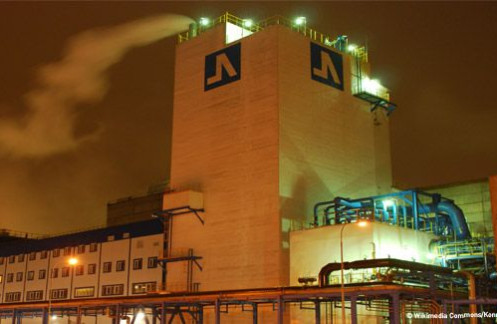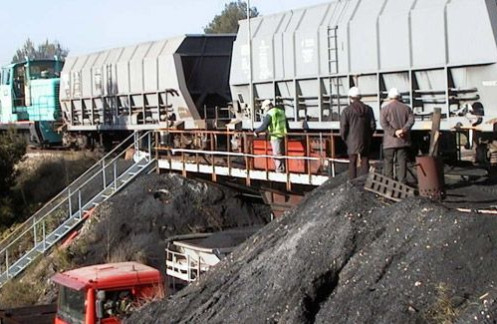Gilles DOMAINBulk Efficiency Manager - Air LiquideWe appreciated the pragmatic approach proposed by EURODECISION and their knowledge of the field, and the flexibility of the solution proposed allowed modeling our business in record time.
Founded in 1902, today Air Liquide is present in 65 countries. The Group supplies nitrous oxide, argon, hydrogen and other liquefied gases to industries as diverse as the steel, chemicals, glass, electronics, pulp & paper, metallurgy, agrifood, health and aerospace industries. With over a million customers worldwide, the Group’s 2002 sales totaled 7.9 billion Euros.
While most of the gases marketed by Air Liquide come from the air, carbon dioxide is generally produced from the residual gases of fertilizer plants. These plants are rarely placed near Air Liquide’s customers and production and consumption cycles are in opposite phases. The production of fertilizer manufacturers peaks in the winter when the demand for carbon dioxide is low and conversely production is low in the summer when the need for carbon dioxide is high.
Argon is a rare gas obtained from the distillation of air. There are few sources as not all the plants treating air gases necessarily produce argon. While more industrialized Northern Europe produces excess Argon, Southern Europe is in constant deficit.
For all the gases distributed bulk the costs of logistics represent a significant share of the cost of the end product. It is generally accepted that beyond 250 km, the cost of transport in cryogenic tanks is prohibitive. In Europe most of the gas is transported by truck, with a few routes being done by boat and rail.
Air Liquide has about fifteen carbon dioxide production centers in continental Europe and nearly 4,000 customers. Until 2000, no tanks crossed the borders as each production site supplied all of its country’s customers.
With at most 3 plants per country, the optimization of distribution flows was performed on a daily basis by Air Liquide’s logistics planners. While these solutions proved satisfactory locally, it became apparent that substantial savings could be achieved Group-wide by optimizing the pan-European planning. So, for instance, a plant in Switzerland could serve a customer located in France.
A strategic group-wide think-tank on these matters led to the launch of the ESCALE (European Supply Chain Air LiquidE) project, with the objective to provide a tool to better optimize product sourcing at the European level, taking into account geographic and seasonal imbalances.
After detailed market research, Air Liquide selected the solution already implemented by Eurodecision in the oil industry for the distribution of liquefied products. After a two-month feasibility study, the chosen solution included Eurodecision’s SCOP Network Design optimization software, Dash Optimization’s Xpress-MP solver, the Access database for storing customer, transport and production information, a distance module supplied by CVN and the Mapinfo software for the mapped representation of distribution flows. All results can be exported to an Excel spreadsheet.
For carbon dioxide, the goal is to optimize the distribution of 700,000 tons of gas per year with 15 production centers and 4,000 customers located in more than ten countries.
In early 2001, the first step consisted in modeling the annual planning data developed in 2000 and in studying various scenarios that would enable the current scheme to be optimized. Typical scenario questions were:
What major flows result from the optimum situation and how can they be implemented on a daily basis?
In terms of transport, what would be consequences of the closure of the Mont Blanc tunnel to trucks, of a transport rate hike in Germany or the shortened times for crossing an Eastern European border?
The second phase consisted in studying strategic planning group-wide. What would be the impact of the opening or closing of a supply source? In the event of an investment, ESCALE was a precious aid to study its profitability. It became possible to rapidly compare two potential locations for a site.
Beforehand, a certain amount of data was supplied concerning real or potential production sites with their processing and storage capacity, product families, customers with their needs per type of product, transportation modes and related capacities, as well as unit costs for supply-line and distribution transport. This is a complex mechanism that was modeled by SCOP Network Design without requiring any specific developments.
The ESCALE solution is used by the experts of the European platform in Paris, guaranteeing that all possibilities are properly investigated by the software and that the solution proposed is indeed the best one. While initial tests yielded theoretical savings of 10%, expected real savings should be about 5%.
In the long term, other products are likely to be investigated with ESCALE, like oxygen or nitrogen. While the optimization of these gases is less problematic than argon and carbon dioxide, as the sources are closer to the distribution centers, the optimization of flows could be considerably improved with ESCALE.






